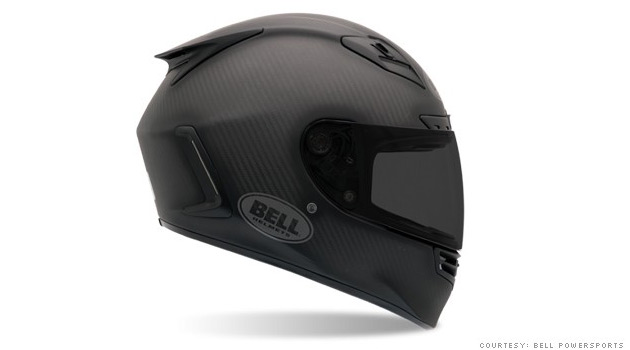Motorcycles
From Leather to Carbon: A Brief History of Helmet Technology

Early motorcycle helmets were more fashion than function. Leather varieties did little more than keep the head warm. Some veterans returning from WWI, and particularly WWII, wore combat helmets. While they may have kept the head warm and proved the outlaw credentials of the rider, they did little to absorb impact. Today, helmets have come a long way in transforming from a mere fashion statement to a true modern marvel.
In The Beginning
The first crash helmet, introduced in 1914 by Dr. Eric Gardner, was little more than a canvas sheath covered in shellac to handle impacts and, more importantly, to slide along road surfaces. It offered some protection, particularly keeping the flesh from sticking to the pavement, but it did little to absorb impacts. It wasn’t until 1953 that a true, impact-absorbing protective helmet was patented by Herman Roth and Charles Lombard. While designed for Air Force pilots, the helmet technology was quickly applied to motorcycles, reports TheHistoryof.com.
Rapid Advancement
Common helmets of the 1960s were made of fiberglass and lined with cork to absorb the impact, reports QN Bikes. In the 1970s, face protection and visors were added. Though helmet quality varied, the Snell Memorial Foundation began testing motorcycle helmets and reporting the findings in the late 1950s. And by the early 1970s, nearly all states had motorcycle helmet laws, though some were later repealed, reports the Insurance Institute for Highway Safety.
While acceptance from states and riders took decades, modern helmets are comfortable and stylish enough that they are widely used by riders of all types. And with sales projected to reach $851 billion by 2015, projects Global Industry Analysts, helmet makers are dedicating serious resources to making seriously high-tech gear.
Modern Marvels
Today’s motorcycle helmets may not look like much from the outside, but they’re technological marvels. They have advanced construction to pass and surpass Snell and government standards. The heart of the helmet is the interior absorbing material, usually made of injection-molded polystyrene foam. This foam varies in thickness to improve fit and increase safety and is designed to absorb, rather than deflect, the energy of an impact.
While the interior of the helmet is relatively inexpensive to make, the outer shell can utilize advanced designs and materials to improve aerodynamics, decrease weight and bring a fair amount of style. Polycarbonate shells are used in lower-priced helmets, while higher-end versions use featherweight carbon fiber and other advanced materials. Basic models start at about $100, and increase from there. Carbon fiber helmets cost $500 and up, primarily because materials are more expensive and require much more hand working than molded shells made of plastic. Some models range in the thousands.
Military Technology
Today’s ultra high-tech helmets take a page from fighter pilot technology. With the advent of GPS, Bluetooth, voice activation, heads-up display and other mainstream technology, motorcycle helmets have become true technological wonders. Helmets can receive and make calls via Bluetooth or house radios to communicate with other riders in a group. Others incorporate small cameras and heads-up displays to give a full field of vision to increase situational awareness and improve the odds of getting out of sticky traffic situations. Others provide GPS navigation and weather information.
With the rapid pace of technology, helmet technology will only continue to advance. The only limits are our imaginations.

















Recent Comments